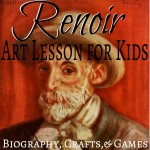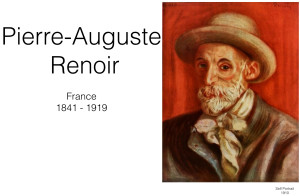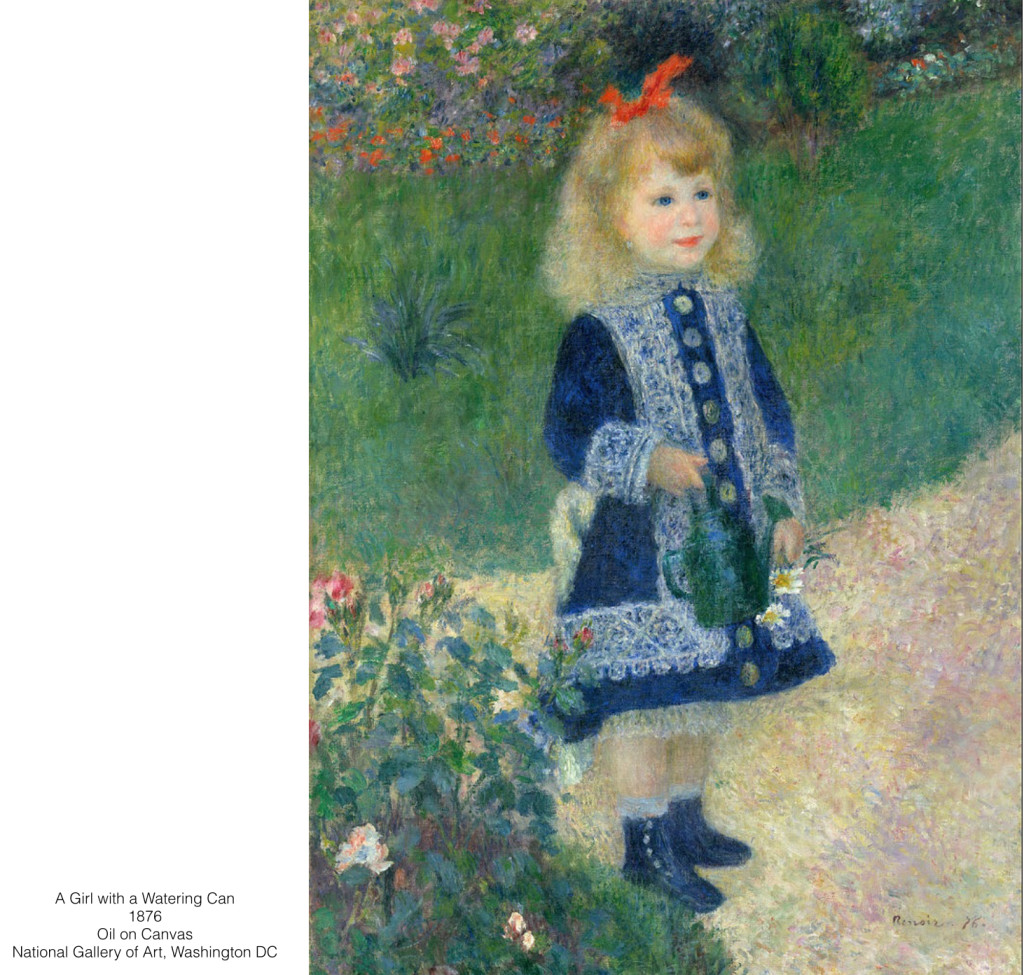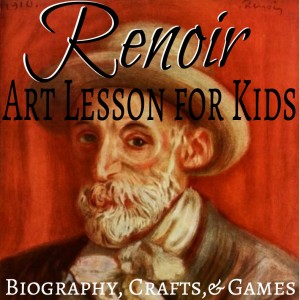 “God hates Renoir!” “Renoir sucks at painting!” Those are the sentiments of protesters at Boston’s MFA this past week. Gentle and loving, no? I’m not really one to balk at protests, but I have to say that this one irked me. I don’t think that everyone needs to share my love for the work of Renoir, but I’m sad that the protestors are using derision as a form of self-expression.
“God hates Renoir!” “Renoir sucks at painting!” Those are the sentiments of protesters at Boston’s MFA this past week. Gentle and loving, no? I’m not really one to balk at protests, but I have to say that this one irked me. I don’t think that everyone needs to share my love for the work of Renoir, but I’m sad that the protestors are using derision as a form of self-expression.
Art is all about opinion and preference. Renoir faced many critics in his day, and obviously we are continuing the tradition today. I am so excited that my students finally got to our Renoir art lesson, one of my favorite of all time, and I hope that they feel free to make their own choice about which artistic styles they prefer, but I also hope they never feel the need to build up their favorite artist or style by tearing down another.
Biography
Pierre-Auguste Renoir, one of the world’s most famous artists, came from a humble family. His mom was a dressmaker and father a tailor. He is said to have stolen the chalk they used to mark fabric to draw on the walls and floor of his childhood home.
{Click here to go directly to the Renoir inspired Oil Pastel & Watercolor Resist craft instructions that accompany this lesson}
At age 13 Pierre-Auguste was apprenticed to paint china cups and plates. Though repetitive, he worked hard and enjoyed this job. He learned to be diligent, detailed, efficient, and to use colors skillfully.
The company went out of business when machines started to be used to print pictures on porcelain (this was at the beginning of the industrial age) so Pierre-Auguste switched to painting ladies’ fans and missionary banners until, at age 20, he decided to study art.
He joined the studio of Charles Gleyre. It is said that Gleyre looked at a picture Renoir was working on as student and said, “You obviously paint for your own enjoyment don’t you.” to which Renior replied, “But of course, you can be sure that I wouldn’t do it if I didn’t enjoy painting.”
Renoir was taught to draw like the old masters – dark color and solid outlines of historic events or legends or portraits. He enjoyed these lessons and stayed until Gleyre retired from teaching.
Pierre-Auguste Renior helped to invent a new kind of painting, called Impressionism, with friends Claude Monet, Alfred Sisley, and Frederic Bazille. They enjoyed natural unposed outdoor scenes, bold color, happiness, and dappled light. Instead of focusing on details, they used quick brush strokes to capture color rather than precise form.
At that time it was rare for painters to work outside, but that is just what the friends chose to do. The invention of the paint-tube made plein-air painting possible for the first time. Prior to this, the hassle of mixing your own colors in your studio, packing them in pots, and then carrying them outdoors before they dried out made painting outdoors extremely difficult.
Impressionism is now one of the most popular styles of painting, but in Renoir’s day many people described the their work as sloppy. They were banned from showing at the Salon (a prestigious art show), and didn’t sell many pieces at first. A few people did liked the impressionist’s work however, and purchased Renoir’s paintings both from both the salon, where he showed works done in an older style, and from an art show that the Impressionsts put on, on their own.
Over time Renior decided to change his style yet again. He said he was at “a dead end” and was bored with impressionism. His new style, which is often referred to as “dry,” combined carefully drawn shapes with light of impressionism.
His son described the process Renoir used to capture natural poses. “When I was still very young, say at the age of three, four, or five, my father would wait until I found something to occupy me and keep me quiet. Are you wondering why my hair was so long for a boy? My father kept his children’s hair long, like you see here, even at age seven, as a protection against falls. He was very concerned with safety. He also enjoyed the pleasure of painting long hair, so I still had curly red locks at the age of seven. I was never punished when I behaved badly while posing. My father allowed me great freedom. He did not want a still model, so I could run about as I pleased. Only now and then I had to be motionless for a few minutes. If some detail in a portrait required that I should stay still for longer, my nurse would read Anderson’s fairy tales aloud, and she and my father would enjoy them as much as I did!”
Renoir painted for more than 60 years, creating over 6000 paintings. Even after painful arthritis crippled his body to the point that he could not walk or bend his fingers well, he asked that a brush be tied to his hands. At age 78, just a bit before his death, Renoir said, “I think I’m beginning to understand something about painting.”
I’m still curious to learn what he understood.
Recommended Renoir resources for kids:
- Books (note: the links below are affiliate links – thank you for your support.)
Pierre-Auguste Renoir, The Primary Source Library of Famous Artists by Catherine Nichols
A simple yet detailed biography
Renoir and the Boy with the Long Hair by Wendy Wax
Fun story with a mixture of real art pieces and illustrations
Activities:
- View maps of the spread of impressionism and play online games
- Print your own Renoir word search
- Visit Kahn academy to watch videos and learn more about the beginning of impressionism
- Create your own Renoir inspired artwork
Consider:
Renoir once wrote in his notebook, “I believe that I am nearer to God by being humble before this splendor (nature); by accepting the role I have been given to play in life; by honoring this majesty without self-interest, and, above all, without asking for anything, being confident that He who has created everything has forgotten nothing.” –source
What role has God given you to play in life?






Pingback: Renoir Oil Pastel & Watercolor Lesson - Liberty Hill House